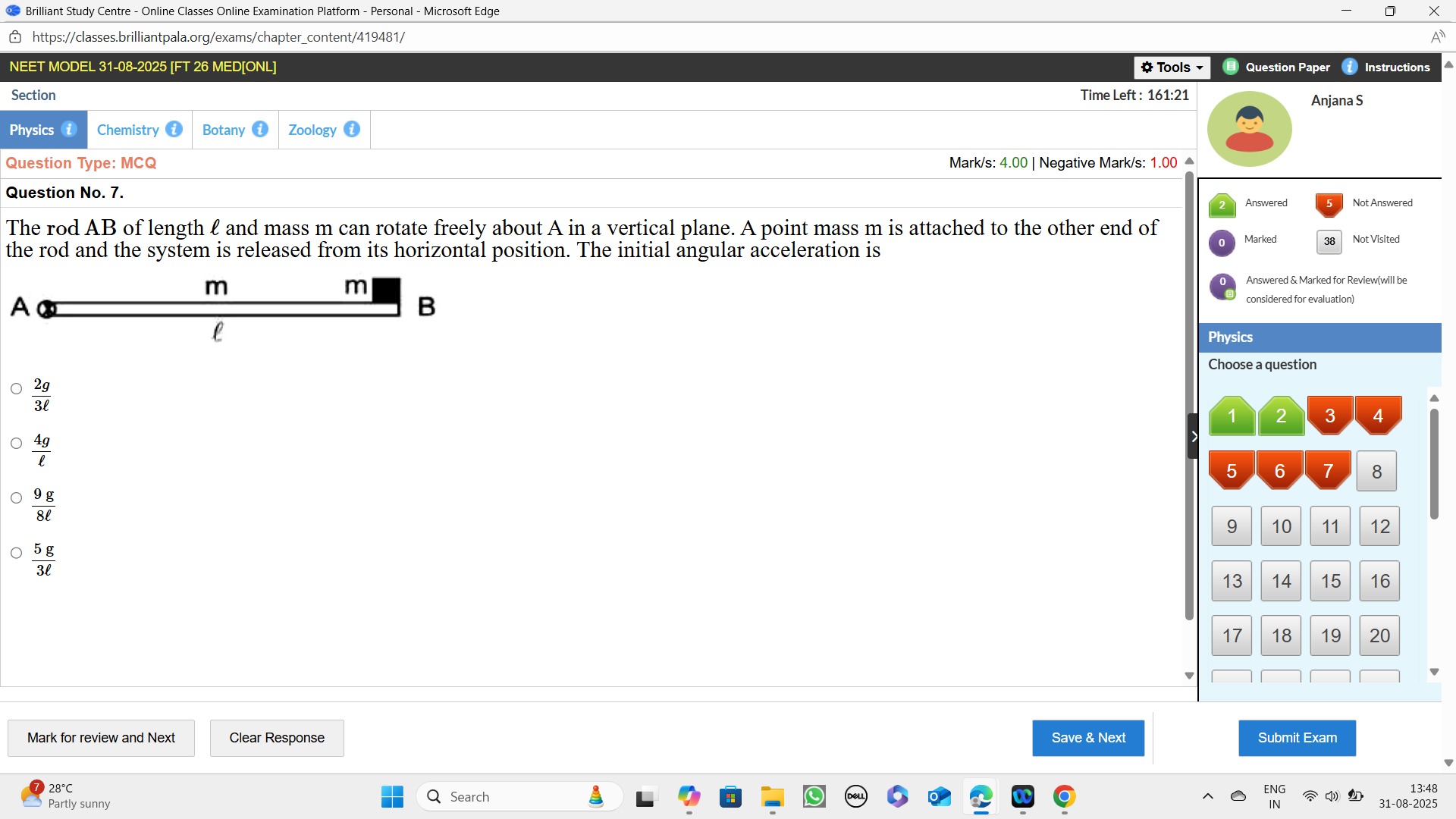Question
Question: The rod AB of length $l$ and mass m can rotate freely about A in a vertical plane. A point mass m is...
The rod AB of length l and mass m can rotate freely about A in a vertical plane. A point mass m is attached to the other end of the rod and the system is released from its horizontal position. The initial angular acceleration is

A
3l2g
B
l4g
C
8l9g
D
3l5g
Answer
8l9g
Explanation
Solution
The system consists of a rod of mass m and length l, pivoted at end A, and a point mass m attached at end B. The system is released from a horizontal position.
-
Torque Calculation:
- The gravitational force on the rod (mg) acts at its center of mass, which is at a distance l/2 from the pivot A. The torque due to the rod is τrod=(mg)×(l/2).
- The gravitational force on the point mass (mg) acts at end B, which is at a distance l from the pivot A. The torque due to the point mass is τmass=(mg)×l.
- Since the system is released from the horizontal position, both forces create torques in the same direction (clockwise). The total torque about A is τtotal=τrod+τmass=2mgl+mgl=23mgl.
-
Moment of Inertia Calculation:
- The moment of inertia of the rod about end A is Irod=31ml2.
- The moment of inertia of the point mass m at end B (distance l from A) about A is Imass=m×l2.
- The total moment of inertia of the system about A is Itotal=Irod+Imass=31ml2+ml2=34ml2.
-
Angular Acceleration Calculation:
- Using Newton's second law for rotation, τtotal=Itotalα, where α is the initial angular acceleration.
- 23mgl=(34ml2)α
- Solving for α: α=34ml223mgl=23×43×mlmg×ll=8l9g
